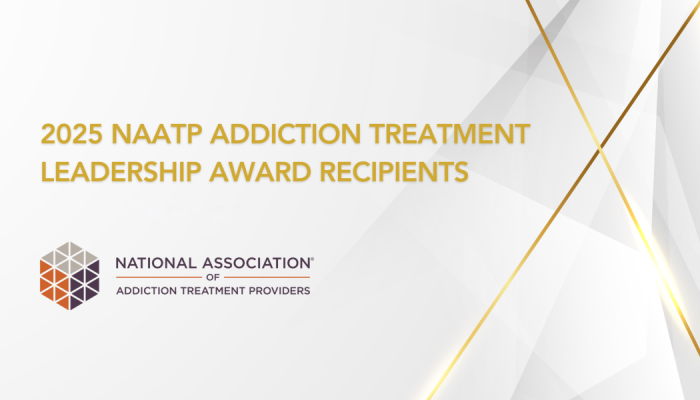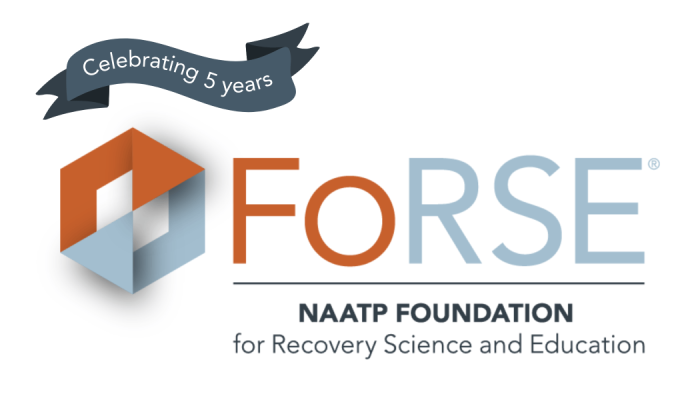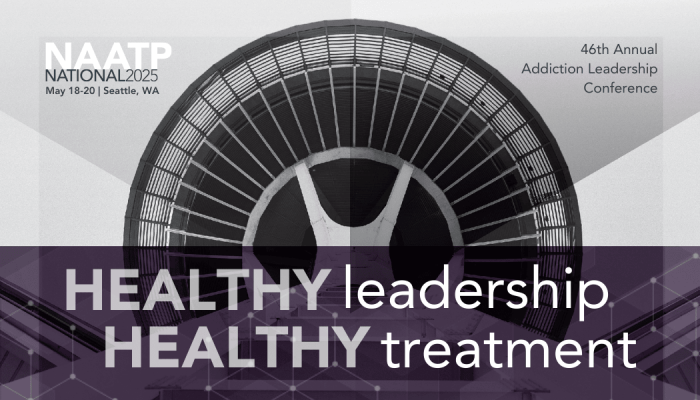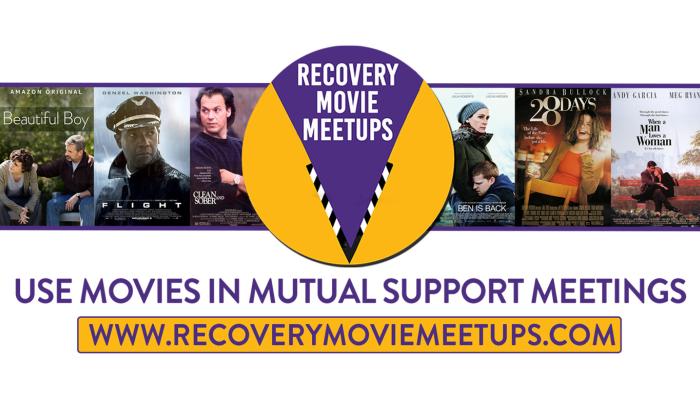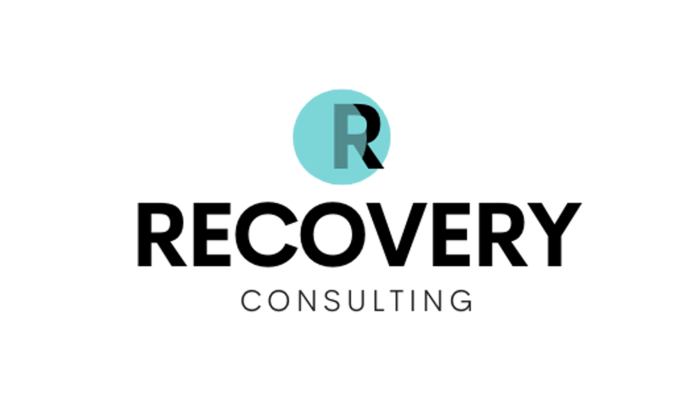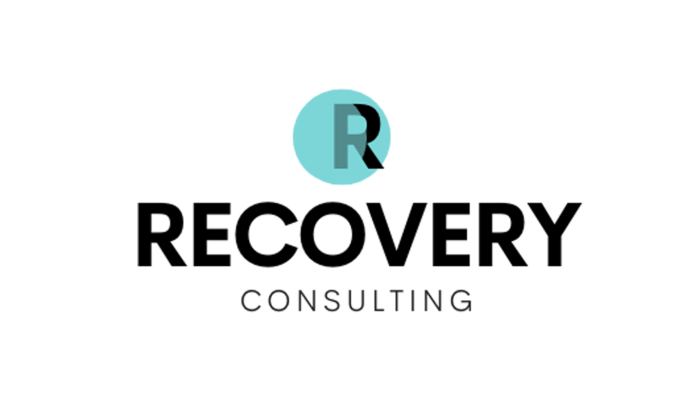Sep 14, 2022

Addiction treatment leaders can move the dial on counselor turnover
Organizations that treat Substance Use Disorder (OSUD) are in the midst of a workforce crisis unlike anything we’ve seen in the past few decades. A myriad of factors—the Great Resignation, the War for Talent, staff burnout, and increasing demand for services—are contributing to significant concerns for OSUD leaders. An April 2022 survey of Behavioral Health CEO’s indicated training and retaining clinical staff was the top priority for BH CEO’s surveyed yet only 10% of organizations had a “strong capability” (people, processes and technology) to sufficiently train and retain clinical staff.
We are entering an era where the workforce, or Human Capital, is taking the spotlight. OSUD needs to evolve their people practices to remain competitive, effective and relevant. You would be hard-pressed to find an OSUD CEO that doesn't value investing in staff. What you will find is a lack of data-driven management of Human Capital in many organizations. I look forward to the day that all OSUD leaders monitor the state and trajectory of their human capital as frequently as they do organizational finances.
This article is intended for leaders of OSUD. You likely think of your employees as your greatest resource. They are the heartbeat of your business. They are often the “tools” that create the greatest change in your clients. They literally are the face of your business. More specifically, your organization is comprised of one of the most difficult employees to retain: counselors. Here, we’ll dig into the various factors affecting OSUD turnover, with recommendations on how to build a healthy workforce.
The Life Cycle of OSUD Counselors
In order to understand counselor turnover, let's take a step back and look at a broader concept called ”the employee life cycle.” People and careers have life cycles referred to in HR departments as “the employee lifecycle.” Ideally, the goal is that successful businesses can identify and assist employees for the duration of their tenure at an organization. By providing the correct support at the appropriate point in the employee life cycle, an employer can get the optimal amount of productivity from the employee in their role. This includes career development, upskilling, promoting from within, and succession planning.
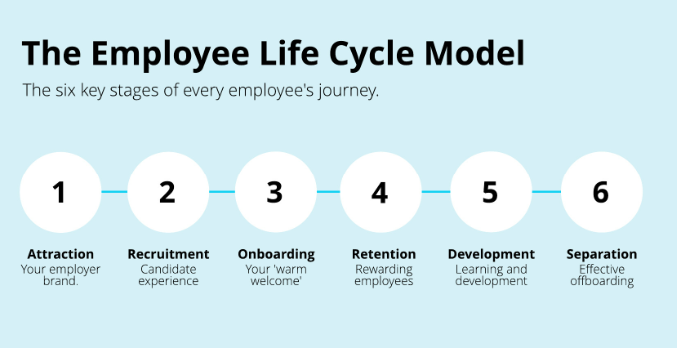
Image courtesy of Personio
The struggle to retain counselors starts early. For example, let’s talk about the newly minted counselor finishing up their master’s program. We often see these employees joining publicly funded organizations with the sole purpose of getting supervision and experience hours towards their licensure. Once the counselor gets their LPC, LCSW, or LMFT, they move on to higher-paying, more desirable roles in other OSUD. How can we retain talent to avoid this turnover scenario? Effective human capital management requires leaders to understand and plan for promotions and turnover. Ideally, leaders can track and benchmark counselor turnover so over time, variations can be identified and addressed somewhere between the supervisor and senior management level. Armed with this data, OSUD can implement measures to retain quality staff longer, and minimize organizational disruption due to staff transitions. Approximately half of employees leaving an organization say that their managers could have done something to prevent them from leaving their job.17
The Data Problem with Counselor Turnover
In a world where data is king, there is no good universally accepted data on SUD (Substance Use Disorder) counselor turnover. This is due to lack of uniform job titles, variation and lack of reciprocity for state licensure, and flat out historical lack of recognition and respect for the profession. This is changing as the demand for services increases, stigma around substance use disorder slowly dwindles, and the value that OSUD provides to the overall health becomes more pronounced in the media and traditional healthcare space.
As an organization, your turnover rates should be between 30 to 60 percent.1,16. This depends mostly on your location (rural, suburban, urban), type of service provided (residential, outpatient, medical, OPT, etc.), and the size of your organization. You should be tracking, monitoring, and planning around your employee turnover data regularly. There is tremendous value in identifying departments and leaders that effectively retain staff and those that could use some support. Use of people data within your organization can also allow you to anticipate staffing and training needs. Few organizations have actionable people metrics and it's very difficult to manage what you can't measure.
As an added challenge, the typical drivers of employee turnover are in the midst of a massive change—especially in the behavioral health space. Telecommuting, Covid policies, and Diversity Equity and Inclusion are now in the top considerations for potential employees evaluating a position within a new organization. Three years ago, those considerations wouldn’t have even made the top 10. Find out the drivers in your workplace. The latest McKinsey report and Reuters survey may not be reflective of our industry. SUD counselor have been shown to join, stay and leave SUDO’s for different reasons than other segment of the US workforce. 1, 2,3,9,12
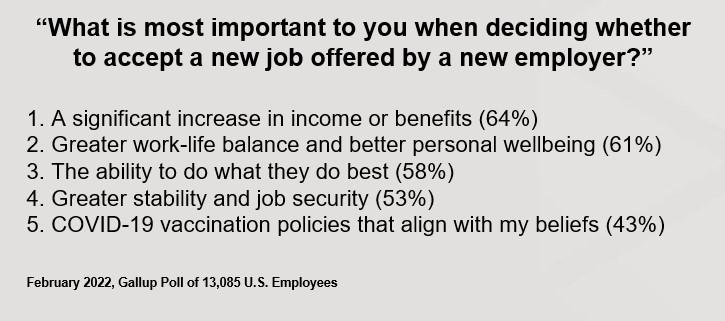
Organizational Factors Affecting OSUD Turnover
It is possible for OSUD leaders to identify predictors of employee turnover for their respective organizations. To do so effectively, OSUD leaders need to consider how organizational factors impact their turnover rates. Let’s look at a few examples from the research:
- New treatment methodologies. A 2019 research study1 found better compensation combined with training and implementation of clinical evidence-based practices (EBP) was effective in reducing turnover if the counselors perceived the intervention to be effective. Conversely, the counselors who experienced financial strain in organizations that did not participate in EBP were 30 percent more likely to leave the following year.
- Internal communications. Consider the following when developing organizational newsletters, staff meeting agendas, or other internal communications. When thinking about organizational change and its impact upon counselor turnover, a 2011 study3 found that SUD counselors are less likely to turnover if they feel the organization is making changes that are warranted, and more likely to leave when organizational change is occurring unnecessarily. Effective organizational communication has many benefits, including reducing counselor negative perceptions of organizational change.
- Clear opportunities. Another 2022 behavioral health workforce study2 from found that “A lack of transparency and absence of clear opportunities for salary increases, additional certification and training, and leadership or administrative positions are significant barriers to provider recruitment and retention”. Note that some of the findings shared in that study are merely correlates and not necessarily drivers of counselor turnover. I include these data because they help paint a picture of the complex landscape that OSUD need to navigate when addressing SUD counselor turnover.
- Therapist support. A 2008 National Institute of Drug Abuse Study12, identifies the following organizational characteristics as predictive of SUD counselor turnover rates: perceived level of therapist support, salary, level of clinical supervision, perception of fairness, and leadership effectiveness.
- Job satisfaction. Another body of evidence from a 2012 National Institute of Health study18 reflects that counselor low job satisfaction, poor management, and poor organizational communication were also related to intent to quit.
- Emotional exhaustion. One 2008 NIDA study12 identified a series of correlates that contributed to emotional exhaustion and counselor turnover. The perceived quality of clinical supervision is strongly associated with counselors’ perceptions of job autonomy, procedural justice, and distributive justice, which are, in turn, associated with emotional exhaustion and turnover.
The OSUD industry has plenty of room to grow in respect to employee turnover and retention in 2022. I would be remiss if I did not quote the iconic SUD researcher and author William White, who so wisely said: “We believe it also might be of benefit for the field to shift its focus from why counselors and other addiction professionals leave employment in addiction treatment to why people stay working within particular organizations and within the field. Ironically, while there is much to learn about staff turnover, we know a lot more about turnover than we know about retention.”16
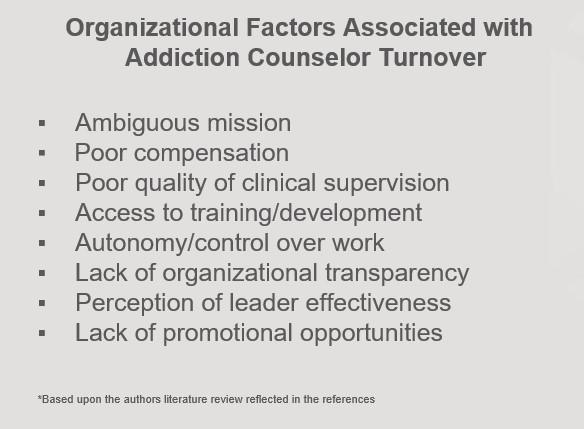
Turnover or Something Else? How to Diagnose Your Organization
Circling back to Employee Life Cycle, it is critical that organizations look at the big picture. Upon close examination, you may find that your problem is not turnover. Instead, your biggest growth areas may be your hiring practices (effective job descriptions, interview process, sourcing), onboarding, or employee development/training. It’s wiser to retain and develop your existing staff than recruit in the current market.
As your organization is gathering information on your people practices, it is imperative you engage your staff and understand their perspective. It doesn't matter what your employees identify on their satisfaction surveys (that only 10 percent of organizations even offer); what matters is that they feel heard and are engaged in a process to improve as an organization. Consider the LinkedIn survey below that highlights the gap between employee wants and employer perceptions. We cannot afford to make false assumptions that directly impact the attraction and retention of counselors.
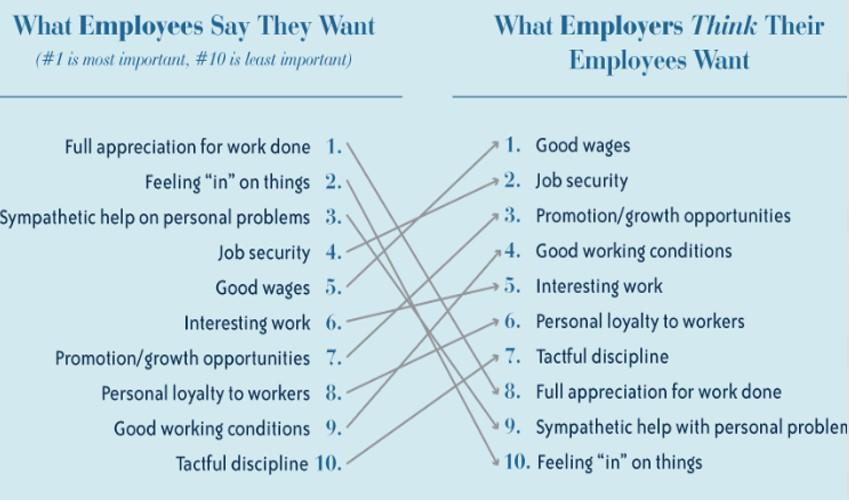
Recommendations for OSUD Leaders
We identified some drivers and correlates of OSUD counselor turnover. I suspect many of you will not find the research conclusions surprising or pivotal. There is no silver bullet or secret sauce. There are, however, well-documented best practices on healthy work cultures and workplaces. You will need to extrapolate best practices from other industries and build on what your organization knows. Here are my recommendations:
Make a thorough assessment of your “people practices.” Get an outside perspective, preferably from someone with an understanding of best practices from other sectors. Blend that perspective with that of your leadership team and develop a strategic plan on how you would like to better manage your Human Capital.
Get some support around human resource management (HRM). Just because many OSUD leaders have clinical experience, that does not mean we have HRM skills. By integrating HRM best practices into your organizations, you’ll be freed up to focus on other things. HRM best practices are widely available and a Google search away. SAMHSA has a whole chapter on it in TIP 42, Chapter 8. Depending on your organization's sophistication around HRM, it may require hiring outside help to establish and monitor this infrastructure.
Monitor your Human Capital data as closely as your financial data. Most OSUD leaders review their financials regularly. But often the same leaders don’t review their Human Capital data regularly because they don’t have it. I once worked with an organization that employed thousands of people, yet had no standardized, consistent HRM data. Don’t be discouraged; just start collecting and using it.
An investment in Human Capital is always a good investment. After all, chances are someone invested in you along your leadership journey, too.
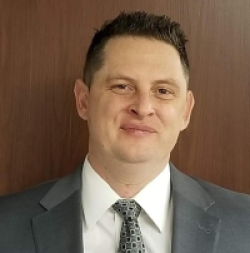 Jay Voigt is the founder of Human Capital, a consulting firm that helps healthcare organizations understand, solve, and sustain people solutions. Through customized human resource management (HRM) best practices, workplace mental health program development and leader coaching, we help small and medium sized organizations develop high functioning leaders and teams. Jay has an MBA and M.Ed in Counseling, with 20 years of professional experience and senior leadership roles in the behavioral healthcare industry. Jay can be reached for a free initial consultation at [email protected].
Jay Voigt is the founder of Human Capital, a consulting firm that helps healthcare organizations understand, solve, and sustain people solutions. Through customized human resource management (HRM) best practices, workplace mental health program development and leader coaching, we help small and medium sized organizations develop high functioning leaders and teams. Jay has an MBA and M.Ed in Counseling, with 20 years of professional experience and senior leadership roles in the behavioral healthcare industry. Jay can be reached for a free initial consultation at [email protected].
References
https://pubmed.ncbi.nlm.nih.gov/31203492/
https://www.ncbi.nlm.nih.gov/pmc/articles/PMC3268900/
https://hbr.org/2019/05/your-approach-to-hiring-is-all-wrong
https://www.healthmanagement.com/wp-content/uploads/HMA-NCMW-Issue-Brief-10-27-21.pdf
https://themanifest.com/business-services/how-employees-respond-unethical-company-behavior
https://pubmed.ncbi.nlm.nih.gov/29939045/
https://www.linkedin.com/business/talent/blog/talent-strategy/linkedin-global-talent-trends
https://aspe.hhs.gov/reports/substance-use-disorder-workforce-issue-brief-0
https://pubmed.ncbi.nlm.nih.gov/18424048/
https://www.ncbi.nlm.nih.gov/pmc/articles/PMC8156437/
https://www.sciencedirect.com/science/article/abs/pii/S0740547207000086
https://pubmed.ncbi.nlm.nih.gov/20675097/
https://linkinghub.elsevier.com/retrieve/pii/S0740-5472(10)00136-4




